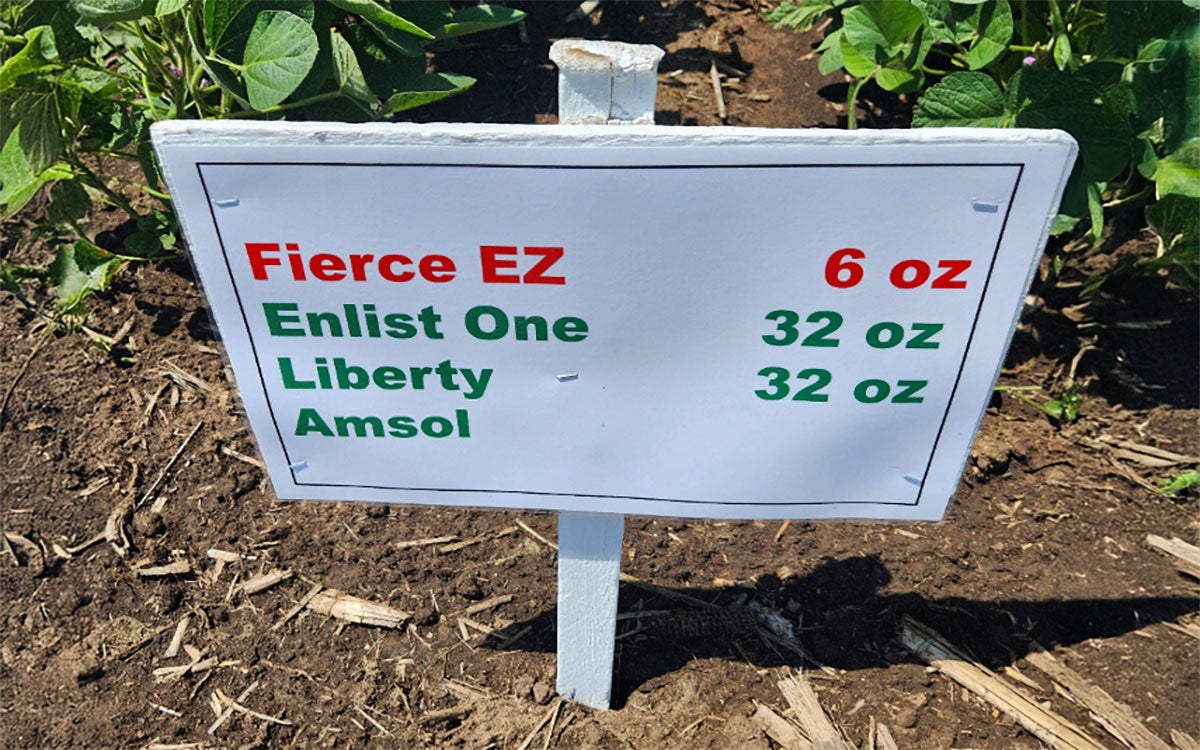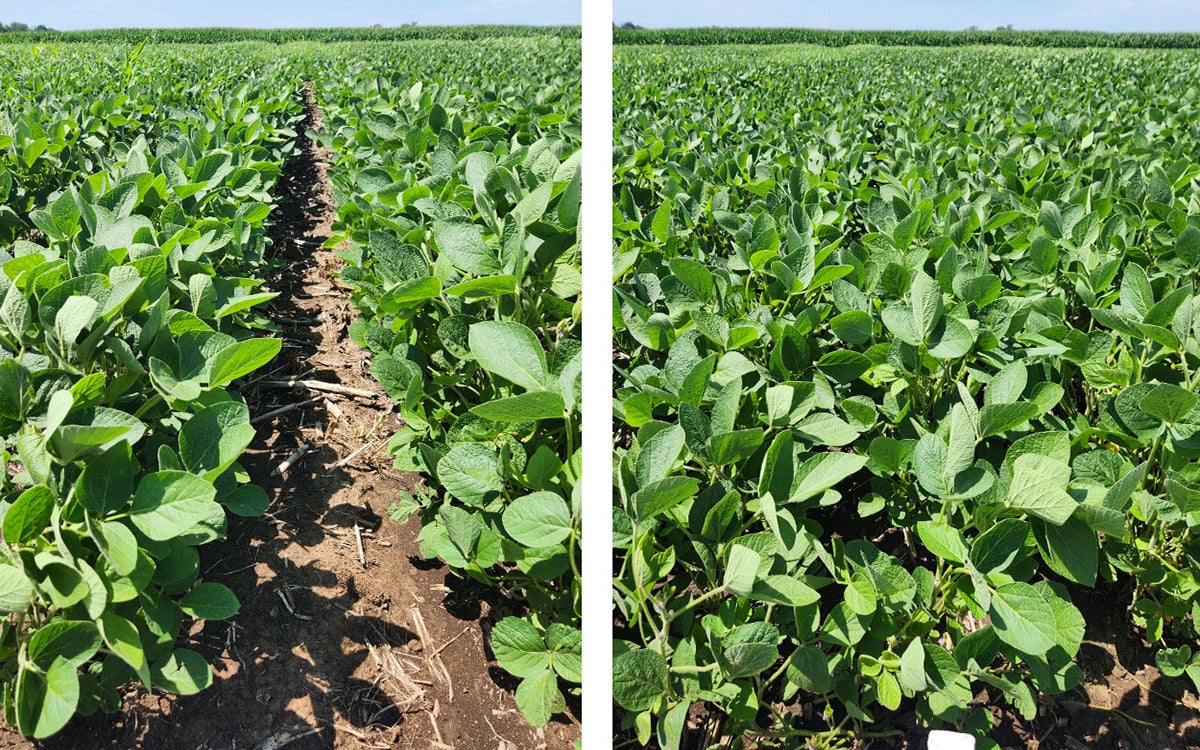Written collaboratively by Eric Jones, Philip Rozeboom, Jill Alms, and David Vos.
Herbicides are a staple tactic in soybean weed management programs. While strong pre- and postemergence programs utilizing multiple herbicide groups in each application will result in effective weed management, a cultural tactic such as row spacing can result in a complementary increase in effectiveness.
Investigating Row Spacing
Research being conducted by the SDSU Extension Weed Science program is investigating the effective of row spacing (30” vs. 15”) on weed management with a strong, effective herbicide program. Fierce EZ (premixture of Valor [flumioxazin] and Zidua [pyroxasulfone]) was applied at planting followed by Enlist One (2,4-D choline) + Liberty (glufosinate) when weeds were approximately 6” in height (Figure 1). Weed control was great in both row spacings (Figure 2). While weeds were sprayed at 6” in height for this research, spraying weeds 2 to 4” in height is recommended to ensure effective weed management.
Despite the great weed control, the canopy has not closed in the 30” spacings as of July 23, 2025, while the canopy as been closed in the 15” spacings for several weeks (Figure 2).


Weed Management Implications
Open inter-rows are candidates for later emerging weeds with rain events and warmer temperatures. The closed-canopy inter-rows minimize the opportunity for later emerging weeds as sunlight cannot reach the soil surface to stimulate seed germination. At this point in the season, later emerging weeds will likely not cause a yield decrease. These later emerging weeds will produce seeds that will have to be managed in future growing seasons. Therefore, the strong and effective (also likely expensive) herbicide program may not deplete the weed seed bank in the soil.
While not every farmer is equipped to plant narrow spacings, this research is being conducted to help facilitate decision-making that can increase the productivity of farm operations. While 15” row spacings were used in this research, similar results are likely had with 20” row spacing and even 7.5” drilled soybean. If 30” spacings are still being utilized, the addition of a post residual herbicide (i.e., Dual Magnum [S-metolachlor] or Warrant [encapsulated acetochlor]) can provide management of later emerging weeds until the canopy closes.
While the herbicide program in the presented research was effective, other programs using multiple herbicide groups in each application will likely yield similar results. Herbicide programs should be tailored to individual fields and the weed species present in each field. Refer to the most-recent South Dakota Pest Management Guide - Soybean and the specific herbicide label for more information on application uses and effectiveness on specific weed species.


